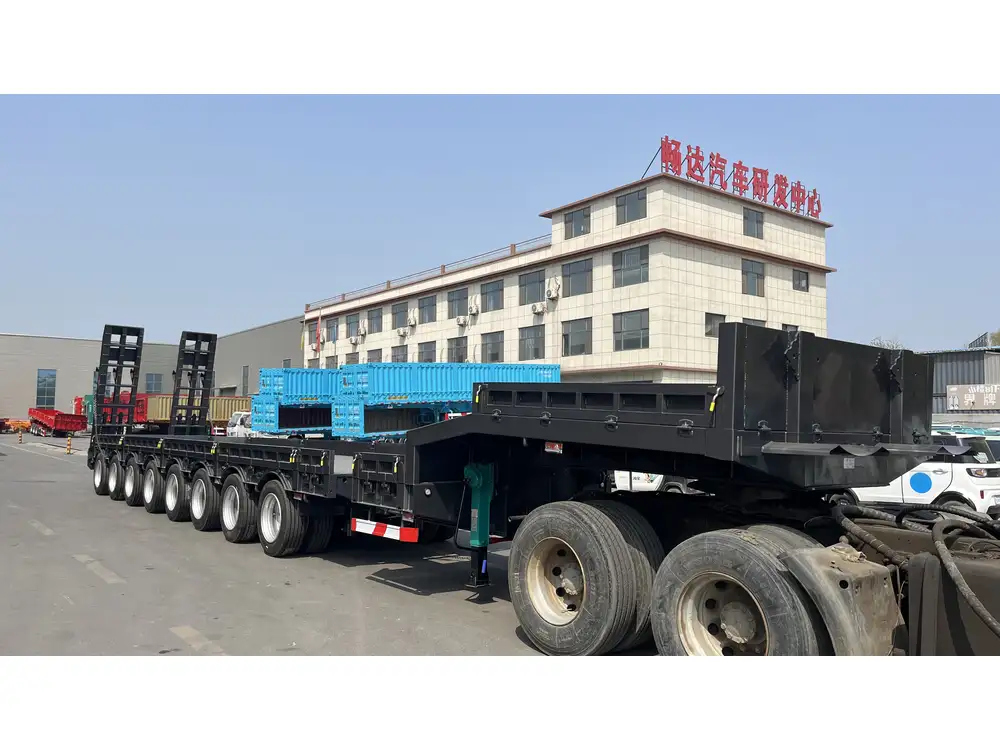Navigating the complex world of semi-trailer towing involves a plethora of considerations, each with its own intricacies. This guide aims to elucidate the different methods for towing a semi-trailer while addressing common concerns, precautions, and user scenarios.
Understanding Semi-Trailer Types
Before delving into towing methods, it’s pertinent to understand the various types of semi-trailers available. Each type may require specific towing techniques:
| Semi-Trailer Type | Description | Suitable Towing Method |
|---|---|---|
| Flatbed | Open platform for hauling goods | Standard tractor towing |
| Reefers | Refrigerated trailers | Standard tractor with electrical connection for refrigeration units |
| Tanker | Transports liquids | Specialized tractor with stability features |
| Container Chassis | For intermodal freight | Standard tractor with twist locks |
By categorizing the semi-trailer types, we can define towing strategies tailored to each design.
Approaches to Towing a Semi-Trailer
Understanding the mechanics and legalities behind towing semi-trailers is crucial. Let’s explore a few effective methods.

1. Standard Tractor-Trailer Method
The most common method involves a standard tractor. Here’s how this can be executed efficiently:
- Inspection: Ensure the trailer is in a towable condition. Inspect the tires, brakes, and securements.
- Hitching: Align the tractor’s fifth wheel with the kingpin of the trailer.
- Coupling: Back up the tractor, engage the fifth wheel latch, and do a tug test to ensure secure connection.
- Check Electrical Connections: Ensure lights and brakes are operational.
- Drive Safely: Make cautious maneuvers, particularly in tight spaces, as turning radii will vary.
2. Using a Tow Truck for Recovery
In cases where a semi-trailer may be disabled or immobilized, employing a tow truck can be paramount. This method includes:
| Step | Description |
|---|---|
| 1 | Position the Tow Truck: Align the tow truck parallel to the trailer. Sky high, it must have sufficient lifting capacity. |
| 2 | Preparation: Engage the truck’s winch and prepare any necessary straps. |
| 3 | Attachment Process: Connect the winch hook to a strong point on the trailer. |
| 4 | Lifting: Carefully lift the trailer while ensuring all systems are operational. |
| 5 | Transport: Secure the trailer adequately before transporting it to the desired location. |
3. Roadside Assistance and Legalities
It’s essential to be aware of the legalities surrounding towing semi-trailers. States may enforce specific regulations governing:
- Weight Limits: Ensure compliance with weight limits for both the towing vehicle and the trailer.
- Licensing Requirements: Different states may require specific licenses for towing configurations.
- Insurance: Check if your insurance policy covers towing logistics.
To avoid mishaps, consult local regulations to ensure full compliance before attempting any towing.

Common Challenges in Towing a Semi-Trailer
Despite the various feasible towing methods, several problems can arise during the towing process. These challenges must be addressed to ensure safety and efficiency.
A. Stability Issues
When a trailer is towed, the sway can create stability issues:
- Adjustment of Load: Make sure loads are evenly distributed within the trailer to minimize sway.
- Utilize Anti-Sway Devices: Employ stabilizers or anti-sway devices available in the market.
B. Braking Complications
Ensuring effective braking is particularly vital when towing larger trailers:
- Examine Brake Systems: Inspect both the tractor and trailer brake systems.
- Electrical Connections: Confirm proper connections between the truck and trailer brake systems for synchronized braking.

C. Weather Conditions
Rain, snow, or wind can dramatically impact towing capabilities:
- Monitor Weather Reports: Always verify weather conditions to prevent hazardous towing situations.
- Reduce Speed: Adjust speed according to road and weather conditions to maintain control.
Expert Tips for Safe Towing
To further enhance towing practices, consider the following expert recommendations:
- Utilize Proper Equipment: Ensure that towing equipment matches the weight and type of trailer.
- Regular Maintenance: Schedule routine inspections and maintenance of the truck and trailer to prevent breakdowns.
- Training and Skill Development: Engage in skill enhancement training to become proficient in handling different towing scenarios.
- Effective Communication: If traveling in a convoy, maintain communication for optimal coordination.
The Importance of Load Security
One critical aspect of towing a semi-trailer is ensuring that the load is secure. An improperly secured load can lead to numerous risks:
- Loss of Load: Can occur during transit, leading to accidents.
- Legal Issues: Authorities can impose fines for loads that are not secured properly.

How to Secure Loads Effectively
- Use Tarps: For loose or particulate materials, cover the load with tarps.
- Employ Straps and Ties: Use heavy-duty straps to anchor the load.
- Check Load Tension: Regularly inspect load security during long hauls.
Technology in Towing and Safety
In recent years, advancements in technology have substantially improved towing methodologies, making them safer and more efficient:
A. Sensors and Alerts
Modern towing vehicles come equipped with sensors that alert drivers to potential issues, such as:
- Rear Camera Systems: Provide visibility of the trailer’s rear, ensuring safe maneuvers.
- Load Sensors: Indicate irregularities in weight distribution, preventing instability.

B. Telematics
Telematics systems offer real-time data on vehicle performance, including:
- Fuel Efficiency Monitoring: Ensures optimal performance during towing.
- Route Optimization: Helps in planning the best routes according to cargo weight.
Conclusion: Mastering the Art of Towing Semi-Trailers
Towing a semi-trailer is not merely a task but an art that requires knowledge, skill, and a keen understanding of legal responsibilities. From selecting the right equipment to maintaining load security, every aspect plays a pivotal role in ensuring successful transportation.
By employing the methods outlined in this guide and continuously upgrading skills, towing operators can become proficient in the complexities of semi-trailer towing. Ultimately, mastery of these principles not only enhances safety but also contributes to increased operational efficiency, which is paramount in today’s competitive logistics landscape.



